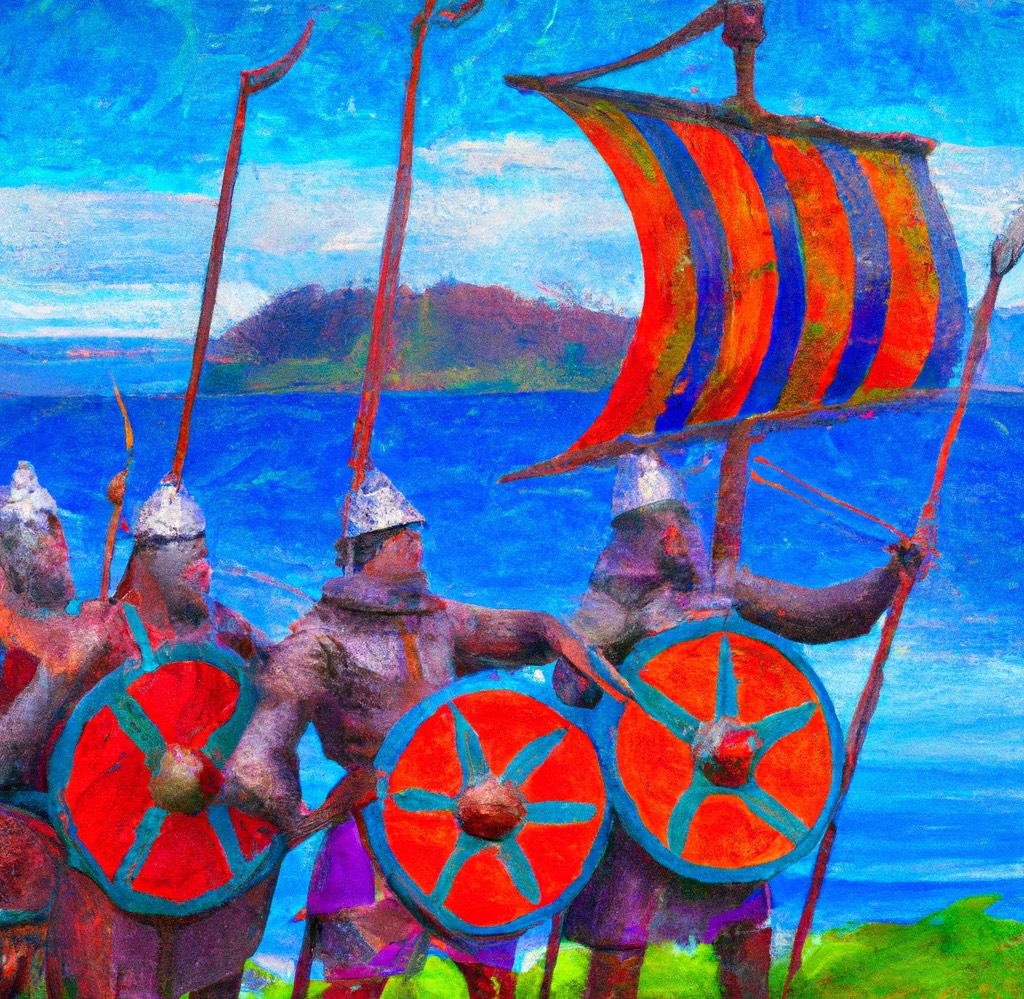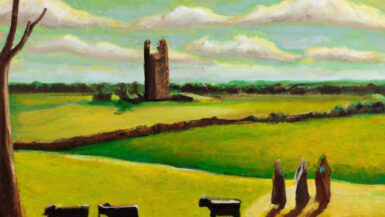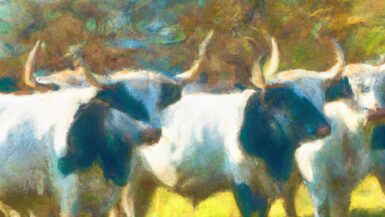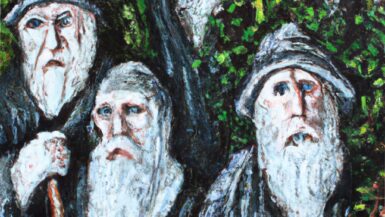Ireland, with its intricate history, became the focus of Nordic adventurers during the late 8th century. The Vikings, as these seafarers were called, made a lasting impact on Ireland’s landscape, politics, and culture.
Initial Viking Raids: The Dawn of a New Threat
The first recorded Viking raid in Ireland took place in 795 AD on Rathlin Island.
- Target Selection: Early Viking raids targeted monasteries due to their wealth in precious metals and relative lack of defenses.
- Expansion of Raids: The frequency and intensity of these raids grew, with monastic sites like Iona, Inishmurray, and Slane facing repeated attacks.
The Viking Age in Ireland: Beyond Just Raids
While initially interested in quick plunders, the Vikings began to recognize Ireland’s potential for prolonged settlement.
- Longphorts Creation: From around 840 AD, the Vikings began setting up fortified ship encampments known as “longphorts”. These would later develop into urban centers.
- Dublin’s Establishment: Founded by the Vikings around 841 AD, Dublin (originally Dubh Linn) quickly became a significant trading and slaving center.
Integration and Settlement: Merging Cultures
As the Viking presence matured, they began establishing more permanent roots in Ireland.
- Trade and Economy: Vikings played a pivotal role in expanding Irish trade routes, introducing the country to broader European markets.
- Mixed Marriages: Inter-marriage between the Norse settlers and the native Irish led to cultural exchange and the integration of Viking customs.
Clashes with Irish Kingdoms: A Turbulent Coexistence
Despite efforts at integration, conflicts between the Vikings and Irish kingdoms were frequent.
- Battles for Dominance: Key battles like the Battle of Sulcoit in 967 AD saw Irish kingdoms resisting Viking expansion.
- Alliances and Diplomacy: At times, Irish kings would ally with Viking leaders to achieve mutual objectives, highlighting the complex relationship between the two groups.
The Role of Viking Leaders: Key Figures in Irish-Viking History
Prominent Viking chieftains played instrumental roles in shaping the Norse legacy in Ireland.
- Ivar of Limerick: Recognized as one of the earliest Viking kings in Ireland, he established a dynasty that would rule the area for generations.
- Olaf Cuaran: A significant player in the Viking Age, Olaf ruled both Dublin and the English city of York at different times.
The Culmination: The Battle of Clontarf
The Battle of Clontarf in 1014 stands out as a pivotal moment in the Viking-Irish narrative.
- Brian Boru’s Campaign: The High King of Ireland, Brian Boru, challenged the Norse-Irish alliance’s dominance leading to this monumental battle.
- Outcomes: Although Brian Boru died, his forces achieved victory. While this didn’t signal the end of Viking activity in Ireland, their political dominance waned considerably after this.
Cultural and Technological Exchange: Viking Contributions
The Vikings brought more than just warfare to Ireland; they introduced various technological and cultural elements.
- Shipbuilding Techniques: The advanced shipbuilding skills of the Vikings influenced local Irish designs, leading to more seaworthy vessels.
- Urbanization: Vikings are credited with founding not only Dublin but other significant urban centers like Waterford, Wexford, and Limerick.
Legacy of the Vikings in Modern Ireland
Centuries after the Viking Age ended, its echoes still reverberate in Ireland.
- Archaeological Remains: Sites like Wood Quay in Dublin offer glimpses into Viking life in Ireland through excavated artifacts.
- Place Names: Many places in Ireland, including towns and streets, retain names of Norse origin, indicating former Viking settlements or influence.
- Genetic Influence: Recent DNA studies suggest that a significant portion of the Irish population has Viking ancestry, underscoring the deep-rooted connections between the Norse settlers and native Irish.
By weaving a complex tapestry of raids, settlements, conflicts, and alliances, the Vikings left an indelible mark on Irish history. Their legacy, evident in the urban centers they founded, the archaeological remains they left behind, and the genetic imprint they imparted, reminds us of a time when Norse longships were a frequent sight on Irish shores.






Leave a reply